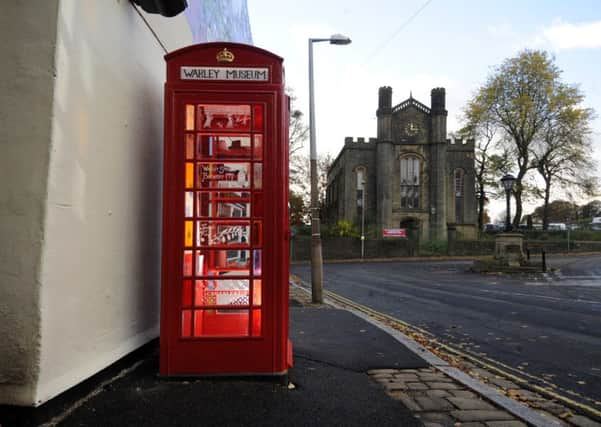Villagers show imaginative uses of old call boxes as BT consults on removal of 1,000 payphones in Yorkshire


With waning usage, many are now little more than cast iron shells painted a vibrant red as an echo of their nostalgic heritage. And as BT begins to consult on the removal of more than 1,000 payphones across the county – old and modern – their future is more in doubt than ever.
“The phone box is a focal point, they are a symbol of the British village,” said Ken Bellamy of the Denby Conservation Group which converted its own to house a village defibrillator. “They are worth keeping. It’s a real shame.”
Advertisement
Hide AdAdvertisement
Hide AdBT is currently consulting on plans to remove 1,023 - a third - of its payphones across the region. Popularity is a factor in the decision making process, with usage falling 90 per cent in the last decade and many not being used once in the last year, while maintenance costs play a part.
Over recent years, many have already been taken over by communities determined to preserve this part of their heritage. In Warley, near Halifax, a disused phone box has now become what could be the world’s smallest museum.
Telling the history of this Yorkshire village, the cubicle contains etched glass, old photographs, and is soon to feature its own mosaic floor compiled by resident artists and curators Chris and Paul Czainski who have collected china fragments from neighbours in the village. Restored by the Warley Community Association, it proved so popular at its opening last month that people were queuing to look.
“We did a survey, and nobody was using it,” said association chairman Aliana Bailey. “It only cost £1 to adopt it. The key is village life. The concept of the BT box, and the traditional look of it, is part of the reason it works.
Advertisement
Hide AdAdvertisement
Hide Ad“We wanted to keep it. And we wanted it to look like a telephone kiosk. It’s part of history. People aren’t using them.
“Who goes to a phone box nowadays? If the WCA hadn’t taken it on it would have just withered away as it wasn’t used. But without a doubt, people are nostalgic about them.” But while telephone boxes’ declining usage poses an opportunity for change for some, for others, particularly in rural communities reliant on them for an outside line, the threat of their removal sparks a heated debate. “Rosedale’s is right at the top of the Dales where there’s no mobile signal at all – people might not use the box a lot but at least they can call 999 if they need to,” said Ena Dent, chairman of Rosedale Parish Council in the North York Moors National Park.
“It’s desperately needed. There’s no alternative. There are thousands of visitors here – and just one phone box at the top. There’s nothing else. I don’t see how many more things they can remove from rural village life and expect people to carry on living here. It’s despicable. This is something we will fight - it can’t always be about pound, shilling and pence.”